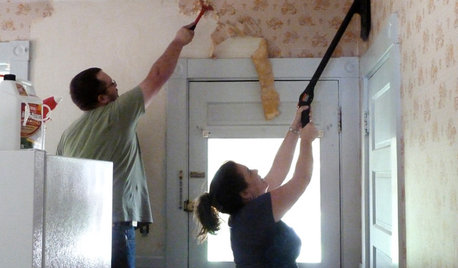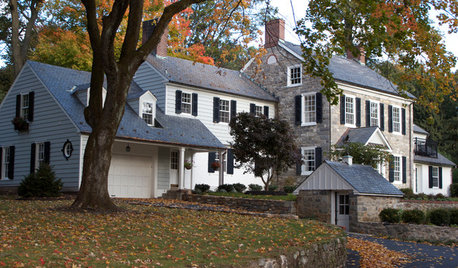Dormant spray timing
Scott F Smith
16 years ago
Related Stories

MATERIALSInsulation Basics: What to Know About Spray Foam
Learn what exactly spray foam is, the pros and cons of using it and why you shouldn’t mess around with installation
Full Story
LANDSCAPE DESIGNIs It Time to Consider Fake Grass?
With more realistic-looking options than ever, synthetic turf can be a boon. Find the benefits and an installation how-to here
Full Story
DECORATING GUIDESHow to Remove Wallpaper in 4 Steps
Learn the best way to remove wallpaper with only water (and elbow grease) so your next wall treatment will look great
Full Story
GARDENING GUIDES7 Ecofriendly Gardening Ideas That Also Cut Chore Time
Spend less time weeding, less money watering and more moments just sitting back and enjoying your healthy garden
Full Story
GARDENING GUIDES10 Easy Edibles for First-Time Gardeners
Focus on these beginner-friendly vegetables, herbs, beans and salad greens to start a home farm with little fuss
Full Story
HOUSEKEEPINGIt’s Time to Clean Your Gutters — Here’s How
Follow these steps to care for your gutters so they can continue to protect your house
Full Story
HOUSEKEEPINGHousekeeping 101: How to Clean Silver
Learn from a pro how to properly clean and care for your precious silverware
Full Story
ARCHITECTUREGet a Perfectly Built Home the First Time Around
Yes, you can have a new build you’ll love right off the bat. Consider learning about yourself a bonus
Full Story
SHOWERSGet Steamy in the Shower for Spa Time at Home
Learn the components of a steam shower to plan a safe and sturdy installation and a soothing bath experience
Full Story
EDIBLE GARDENSWhy Grow Quince? For Beauty, Fragrance and Old-Time Flavor
Delightfully perfumed fruit and lovely spring blossoms make this apple and pear cousin worth a spot in the garden
Full StorySponsored
Custom Craftsmanship & Construction Solutions in Franklin County
More Discussions







lycheeluva
Scott F SmithOriginal Author
Related Professionals
Citrus Heights Landscape Architects & Landscape Designers · Birmingham Landscape Architects & Landscape Designers · Saint Charles Landscape Architects & Landscape Designers · Middletown Landscape Contractors · Burlington Landscape Contractors · College Park Landscape Contractors · Commack Landscape Contractors · Kearny Landscape Contractors · Lynchburg Landscape Contractors · Lynwood Landscape Contractors · North Highlands Landscape Contractors · Tinton Falls Landscape Contractors · Vermilion Landscape Contractors · North Aurora Landscape Contractors · Casselberry Landscape Contractorsbart1
larry_t
glenn_russell
marknmt
glenn_russell
Scott F SmithOriginal Author
glenn_russell
marknmt
olpea
Axel
geraldo_linux
glenn_russell
djofnelson